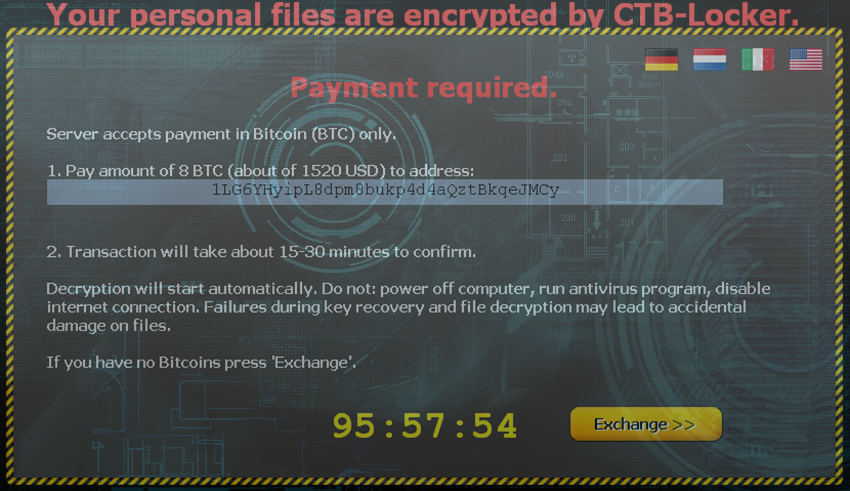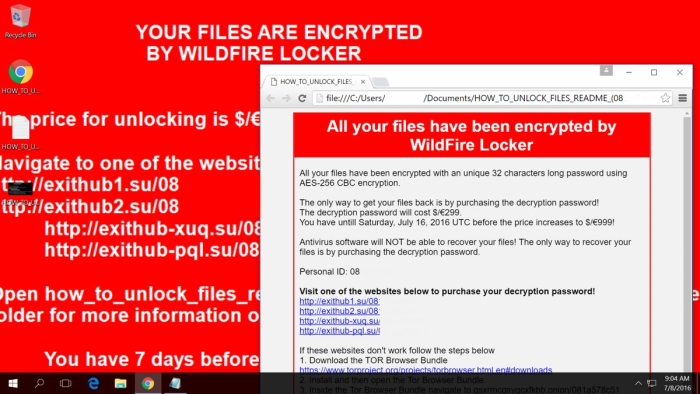

- #Decrypt crypto locker zip file
- #Decrypt crypto locker software
- #Decrypt crypto locker password
- #Decrypt crypto locker zip
Overwriting the original makes it unrecoverable through the Recycle Bin or any other file recovery system. However, the process begins with a blank file with the original name and then deletes that. The encryption process creates a new file. The system uses RSA encryption with a 2048-bit key. It then visits each drive that includes non-executable files, records its directories, and then works through the list, encrypting them. It then launches the ransomware in two processes – the second is a persistence module that will relaunch the ransomware program if its process gets terminated.Īs soon as the main program executes, it scans all accessible drives and lists them.
#Decrypt crypto locker software
The installer adds a key to the computer’s registry to get the software to run on startup. The system copies the program file to the %APPDATA% and %LOCALAPPDATA% directories. What Does CryptoLocker Do?ĬryptoLocker starts its routines as soon as it is launched – it doesn’t delay it. However, that was a fake extension because when the user unpacked it and clicked on the file to open it, the file ran as an executable and installed the ransomware by copying it down from the C&C server.
#Decrypt crypto locker zip
This was a Zip file, which seemed to contain a PDF.
#Decrypt crypto locker password
It is difficult to work out why the hacker bothered with that password route because its other attachment method was just as effective. Applying the password unlocked the file and released the installer. One was to make the file password protected with a note in the email that included the password.

There were two methods used to get the Trojan on the target computer. The email purported to be from a shipping company with a delivery notice attached. That plug-in was the installer for the Trojan.
#Decrypt crypto locker zip file
The other was through illegal download sites, which supplied the virus installer bundled with the video inside a Zip file or making the video unusable but with an accompanying text file that instructed the recipient to download a codex plug-in. One was with a spam email that had a virus hidden in an attachment. How does a CryptoLocker ransomware attack begin?ĬryptoLocker had two methods of ingress. In June 2014, an international alliance of law enforcement agencies shut down the Gameover ZeuS C&C servers in a planned exercise called Operation Tovar. However, the structure of ransomware attacks means that no response is necessary for the campaign to be successful. Emails only need a valid source address if the sender needs a reply. Not only did the C&C server issue instructions to send out a standard email, but it also generated fake domain names. The mailing campaign for the CryptoLocker ransomware was a secondary task for the botnet. The primary purpose of Gameover ZeuS was banking fraud. This reduced the traffic traveling in and out of the server and made the C&C harder to trace. The system used a Peer-to-Peer architecture for communication with the C&C server. It included more than 1 million zombie computers. The Gameover ZeuS botnet was created and controlled by Evgeniy Mikhailovich Bogachev, a Russian hacker. Spam filters on most email systems divert emails from one IP address in bulk by sending those large mailouts from lots of different locations, the botnet ducks that block. They are also used for spam email campaigns. Typically, these legions of computers are used in DDoS attacks, where many computers simultaneously make a connection request to a Web server, overwhelming it. So, hackers invented botnets in which each computer just attacks a target once. Defense mechanisms in cybersecurity software can read the IP address of an attacker and block it. Some botnets control hundreds of thousands of private computers, and other control IoT devices, such as security cameras. The purpose of a botnet is to spread a task between many computers. In most cases, those companies don’t even realize that their devices are working for other people. The computers in the botnet are called “ zombies.” They aren’t entirely controlled by the hackers and continue to operate as usual. The active mechanism on the captured computer can open a connection and scan the remote server for instructions – that host is called the “ command and control” (C&C) server. During its period of operation, it attacked about 500,000 computers.Ī botnet is a group of infected computers controlled from a central server over the Internet. CryptoLocker was first spread on September 5, 2013, and it was shut down in May 2014.


 0 kommentar(er)
0 kommentar(er)
